

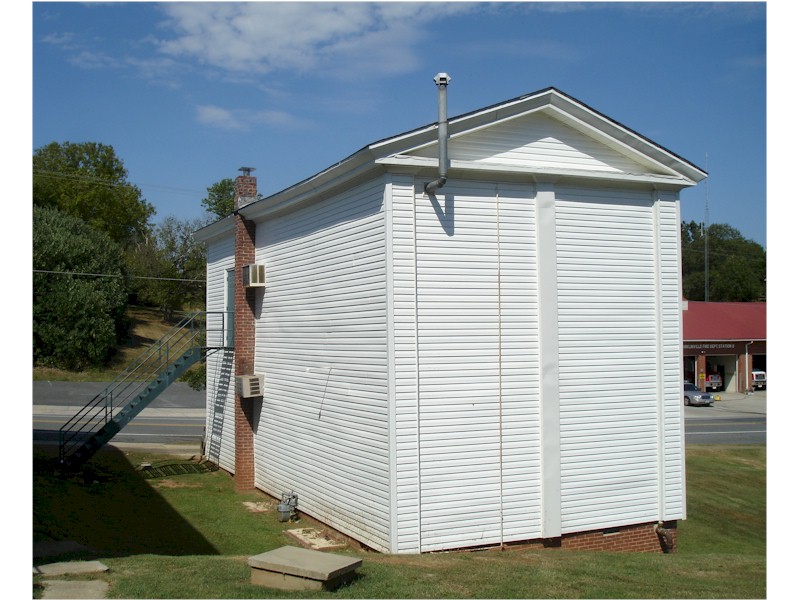
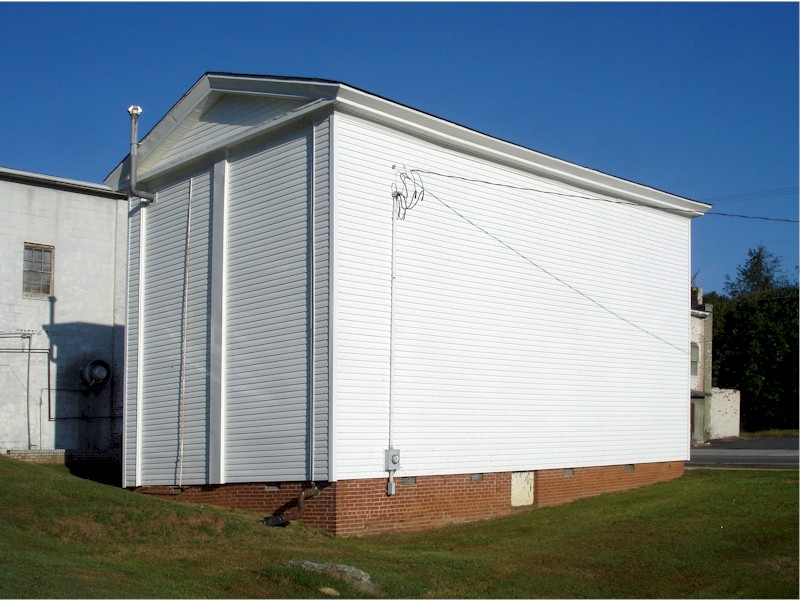
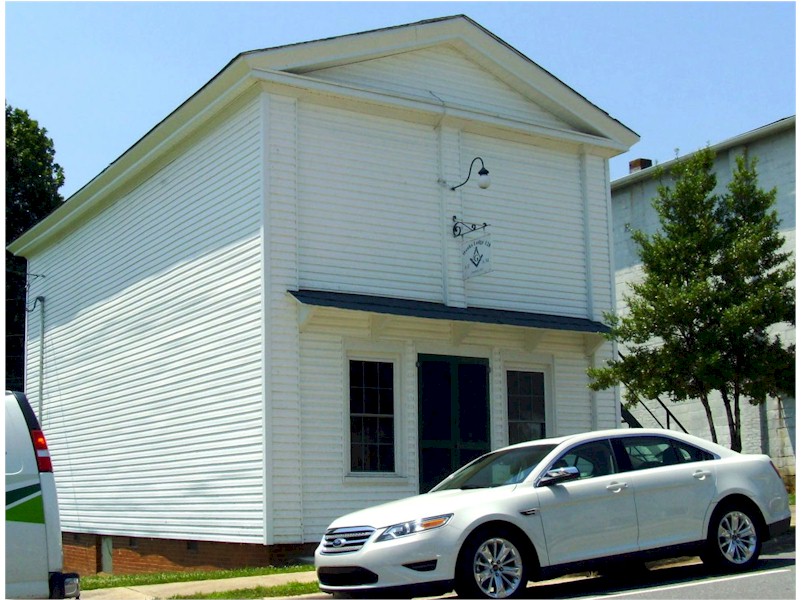
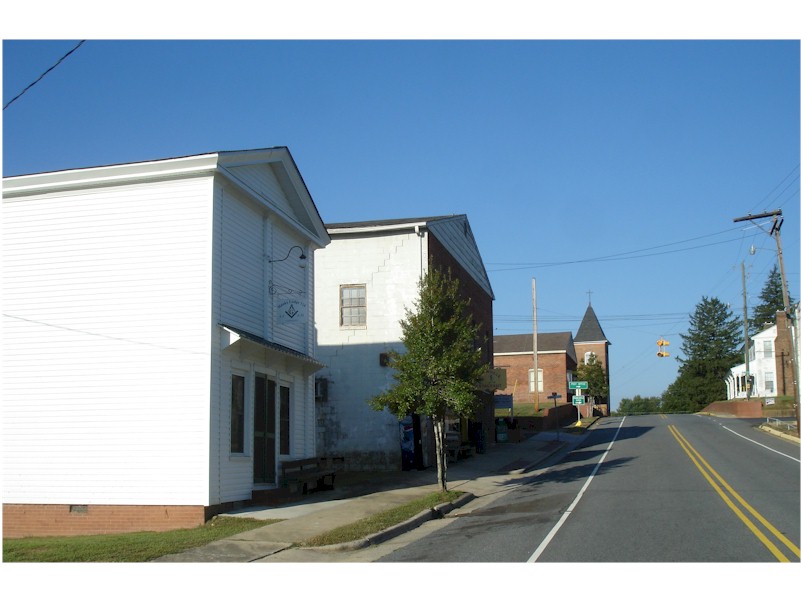
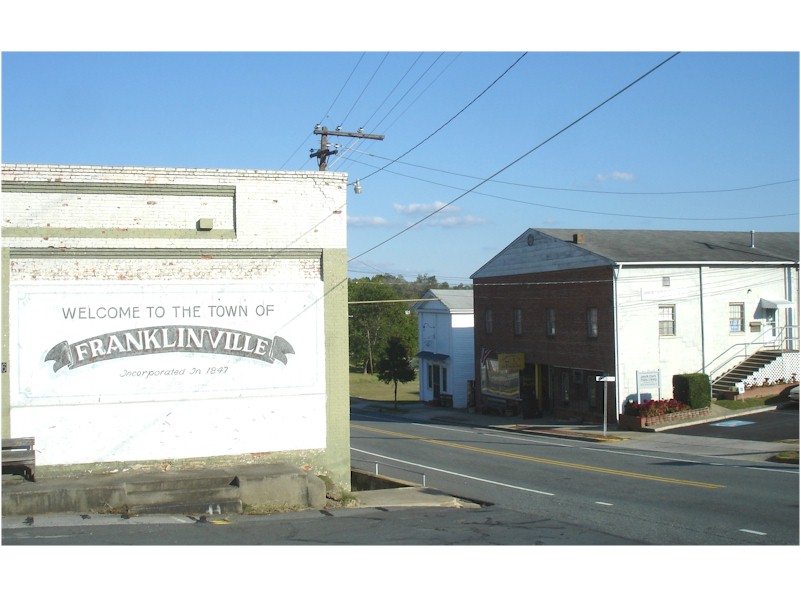
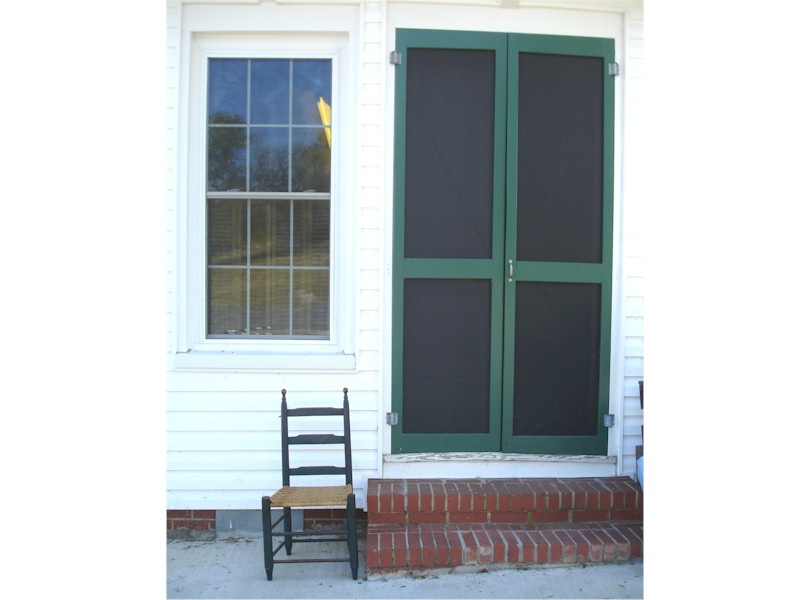
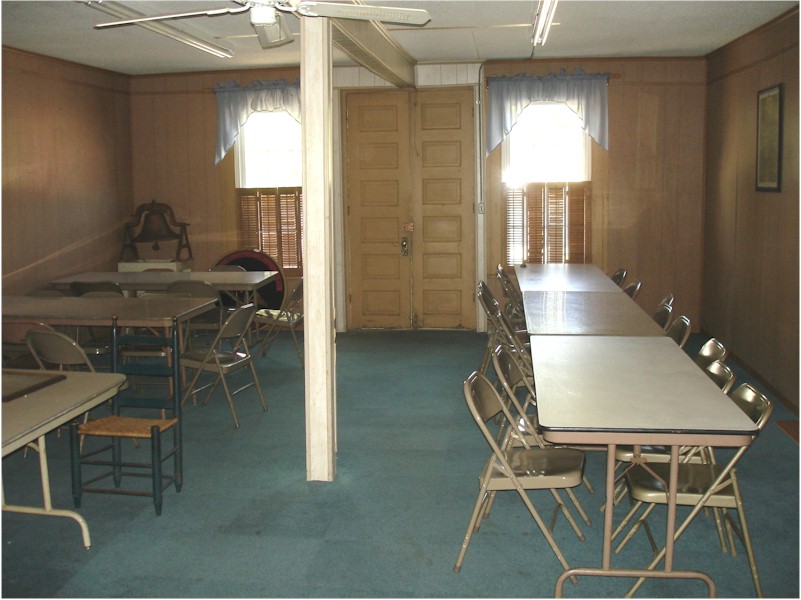
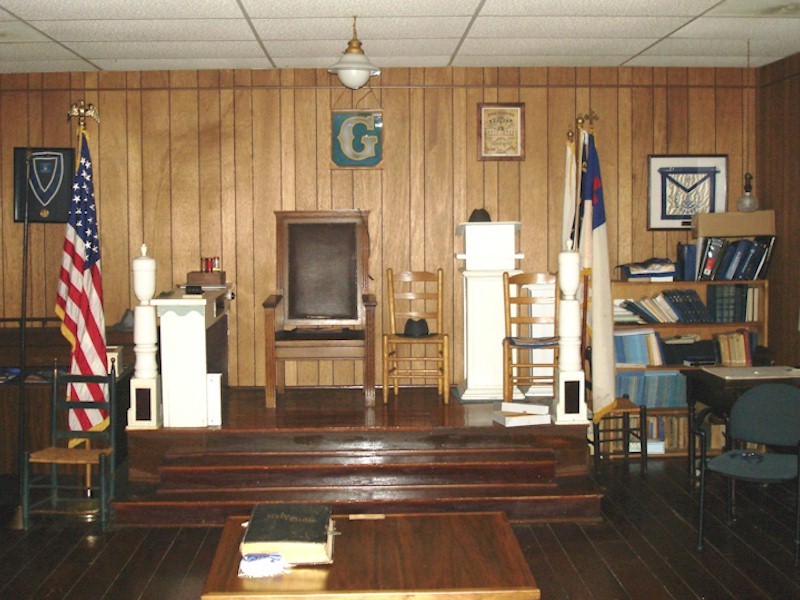
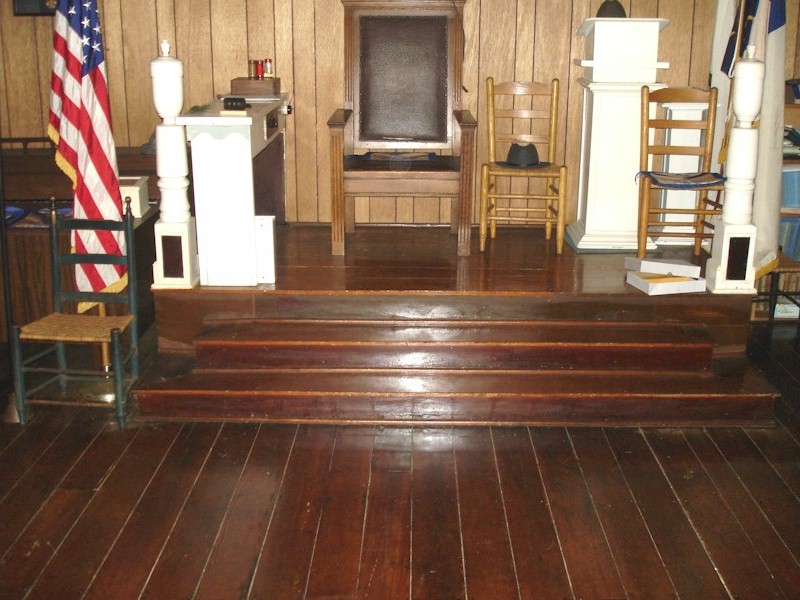
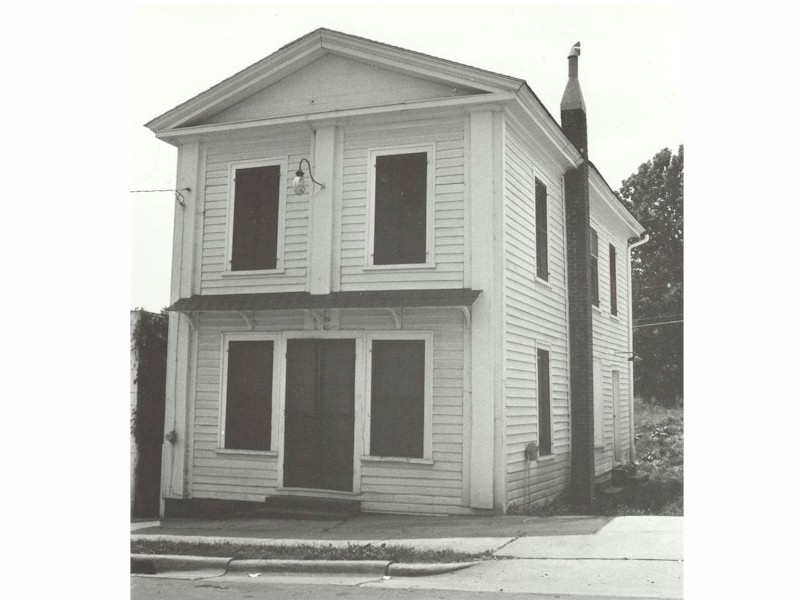
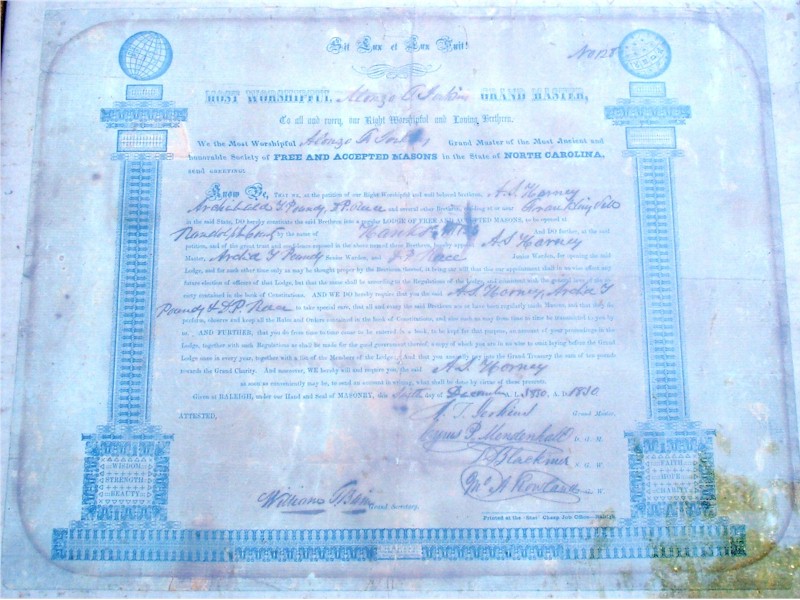
Read the Landmark Designation Report
Read the Landmark Designation Resolution
The first Masonic Lodge in Randolph County was Hank’s No. 128, organized March 26, 1850, at Franklinville. At the lodge’s monthly meeting, dated April 12, 1850, a motion was passed that members Garrett Love, A.S.Horney, and David Reece be appointed to select a location, present plans, and get an approximate cost building a Masonic Hall. Members B.T. Coffin and S.B. Hunt were appointed to collect funds. On July 17, 1850, A.S. Horney, S.B. Hunt, and H.M. Foust were authorized to purchase a lot and contract for the building of a lodge hall. On September 10, 1850, this committee signed a contract with Spence W. Dorsett and Thomas Allred to construct the building for a sum of $1,350.00. The amount of $675.00 was to be paid when the building was completed and the remainder to be paid in installments. The building was to be completed within six months of the date of the contract. Among the lodge records are two receipts for payment on the building. One is dated April 25, 1851 in the amount of $363.69 and the other is dated May 9, 1851 in the amount of $75.00, the latter one stating “paid in full.”
When the building was complete, its original location stood some six to eight hundred feet east of its present location, facing River Road and Deep River. The Hall was built on the south side of the River Road between the two cotton mills. In 1890 the railroad was extended from Millboro to Ramseur, running across the lodge lot between the Hall and the River road. The River Road fell into disuse following the construction of “Highway 90” (the present NC 22), and in early 1924 the Hall was moved to its current location on the south side of that highway. It was moved to its present site on 157 Main Street, Franklinville, in 1924, by rolling the building on logs and pulling it by mules. The structure was moved in-tact, re-set up in-tact, and not disassembled.
The 1850 original structure has remained at its current location, intact, since it was moved from the 1850 location and set up intact in 1924. In the recent past, the 1850 structure was covered with white vinyl for less maintenance up-keep, better protection, and better preservation. The original exterior siding is intact beneath the vinyl covering.
The temple form Greek Revival building is one of the oldest public buildings in the area, and is doubly important since its construction contract has survived, preserving the names of its builders. Dorsett and Allred were obviously men of some skill, for the Hall is as sophisticated an example of the Greek Revival style as is to be found in Randolph County. The form of the building can best be seen on its rear elevation, where three monumental pilasters rise the full height of the façade, dividing it into two bays. On the front façade the entrance door interrupts the central pilaster. The pent roof above that door isprobably a later addition. Further study of this building may lead to other buildings which can be attributed to Dorsett and Allred.